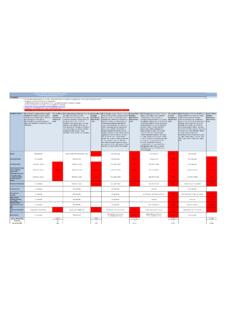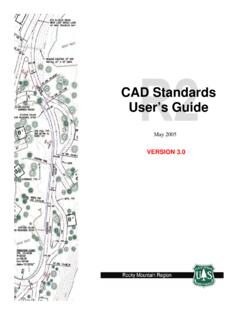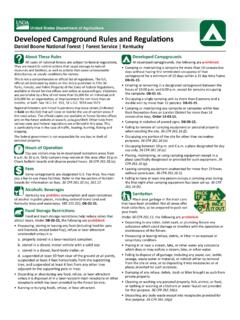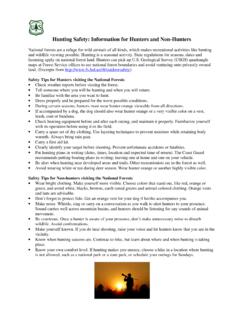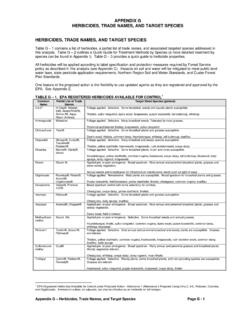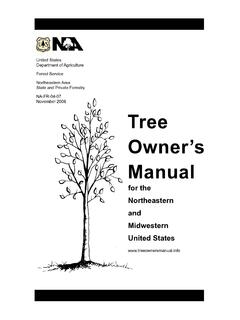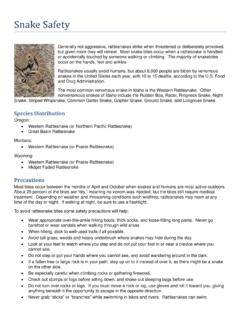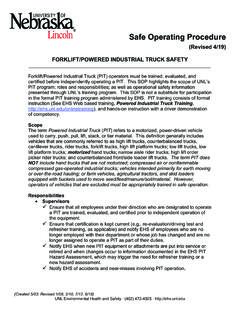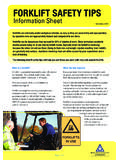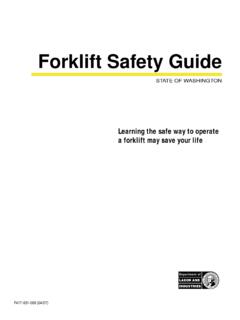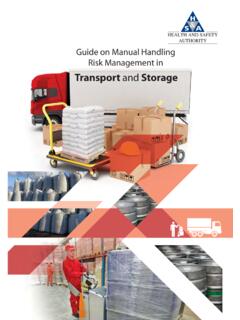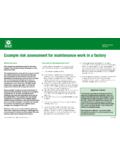Transcription of How to Drive on Black Ice
1 How to Drive on Black Ice Edited by VermontGal, Flickety, Sondra C, Zack and 19 others Winter driving isn't only about dealing with snow; ice on the road is a real threat. Black ice, in particular, is dangerous because it's invisible (the term " Black ice" being somewhat of a misnomer, as the ice is transparent). However, you can protect yourself by understanding and knowing how to deal with this winter issue. 1. Understand that Black ice is like regular ice. It is a glaze that forms on surfaces (especially roads, sidewalks, and driveways) because of a light freezing rain or because of melting and re-freezing of snow, water, or ice on surfaces.
2 It's called " Black ice" because it tends to look like the rest of the pavement on the road, although in reality, it's actually clear. Black ice forms without creating bubbles, which allows it to blend in with any surface it forms over.[1] Black ice is dangerous precisely because it's hard to detect in advance. 2. Know where to expect Black ice. Black ice usually forms just about the freezing point. Sometimes in frigid weather conditions on highways, Black ice will form due to the heat of tires on the road coupled with the freezing temperature.
3 Keep an eye on the weather and highway reports. Black ice forms most commonly at night or in the early morning when the temperatures are at their lowest, or when the sun isn't around to warm the roads.[2] Black ice tends to form on parts of the road without much sunshine, such as along a tree-lined route or a tunnel. It will also form more frequently on roads that are less traveled on. Black ice forms readily on bridges, overpasses and the road beneath overpasses.[3] This is because the cold air is able to cool both the top and under the bridge or overpass, bringing about faster freezing.
4 [4] 2. Know when to expect Black ice. Black ice tends to form in the early morning and evening. During the daylight hours, the road is usually warmer and less likely to create Black ice. But remember: less likely does not mean "never". Always be prepared for the possibility of encountering Black ice. See the signs of Black ice. If you are driving and see cars suddenly swerve for no apparent reason, Black ice is a likely cause. 3. Know how to see Black ice - sometimes. While Black ice is transparent, it can sometimes be seen in the right lighting conditions - if you are looking for it.
5 Black ice almost always forms in very smooth, very glossy sheets. This glossy surface is your indication of potential Black ice. If the majority of the road you're driving on appears a dull Black color, but the patch just ahead of you appears shiny, you may be about to Drive onto Black ice - don't panic, follow the instructions below. This technique for helping to detect Black ice won't work at night, but dawn, daylight and dusk all offer enough light to see. If you are unfamiliar with this glossy appearance, think of a nice new car's Black spray paint compared to an older, un-kept car's Black paint job.
6 You won't always be able to see Black ice, but looking for it can't hurt. It may also help you to stay focused in less than ideal driving conditions. Just be sure to keep your eyes on the rest of your environment as well. 4. Practice driving on slippery surfaces. If possible, (and with a seasoned winter driver) practice driving on ice in a safe surrounding. Find a nice, large, empty parking lot with ice on it. Drive on ice. Practice braking on ice. Understand how your car feels and handles in these conditions.
7 Know what ABS braking feels like if you have it. Practicing this under controlled conditions can actually be a lot of fun! 5. Deal with a Black ice encounter. If you do hit Black ice, your first reaction must be to remain calm and avoid overreacting. The general rule is to do as little as possible and allow the car to pass over the ice. Do not hit the brakes, and try to keep the steering wheel straight.[5] If you feel the back end of your car sliding left or right, make a very gentle turn of the steering wheel in the same direction.
8 If you try to struggle against it by steering in the opposite direction, you risk skidding or spinning out (see below for what to do if this happens). 6. Slow down by de-accelerating. Lift your feet off the accelerator completely and keep your steering wheel fixed in the position it's in.[6] Slowing down will give you more control and prevent needless damage. Do not touch the brakes. Doing so will likely cause you to skid. The idea is to slide over the ice in the direction the steering wheel is facing; usually Black ice patches aren't longer than 20 feet (6 metres).
9 7. If you can, shift into a low gear. Low gears will give you more control. 8. Head for areas of traction. Black ice is virtually invisible, but you may be able to head towards areas of pavement that offer more traction. Such areas of traction may include textured ice, snow-covered areas, spots with sand, etc. 9. If you skid or lose traction, stay calm. Hopefully, you are now going slow and this will make it easier. Black ice is often (although not always) patchy, so hopefully your tires will soon find traction.
10 Use the minimum amount of braking possible, although some braking will be necessary if skidding a lot, as follows: If you have anti-lock braking system (ABS), just put your foot on the brake, apply firm pressure and the car will pump the brakes for you as you skid.[7] If you don't have ABS, pump the brakes gently as you skid.[8] Always steer the car in the direction you want the car to go. 10. If you end up going off the road, try to steer into things that will cause the minimum amount of damage.
